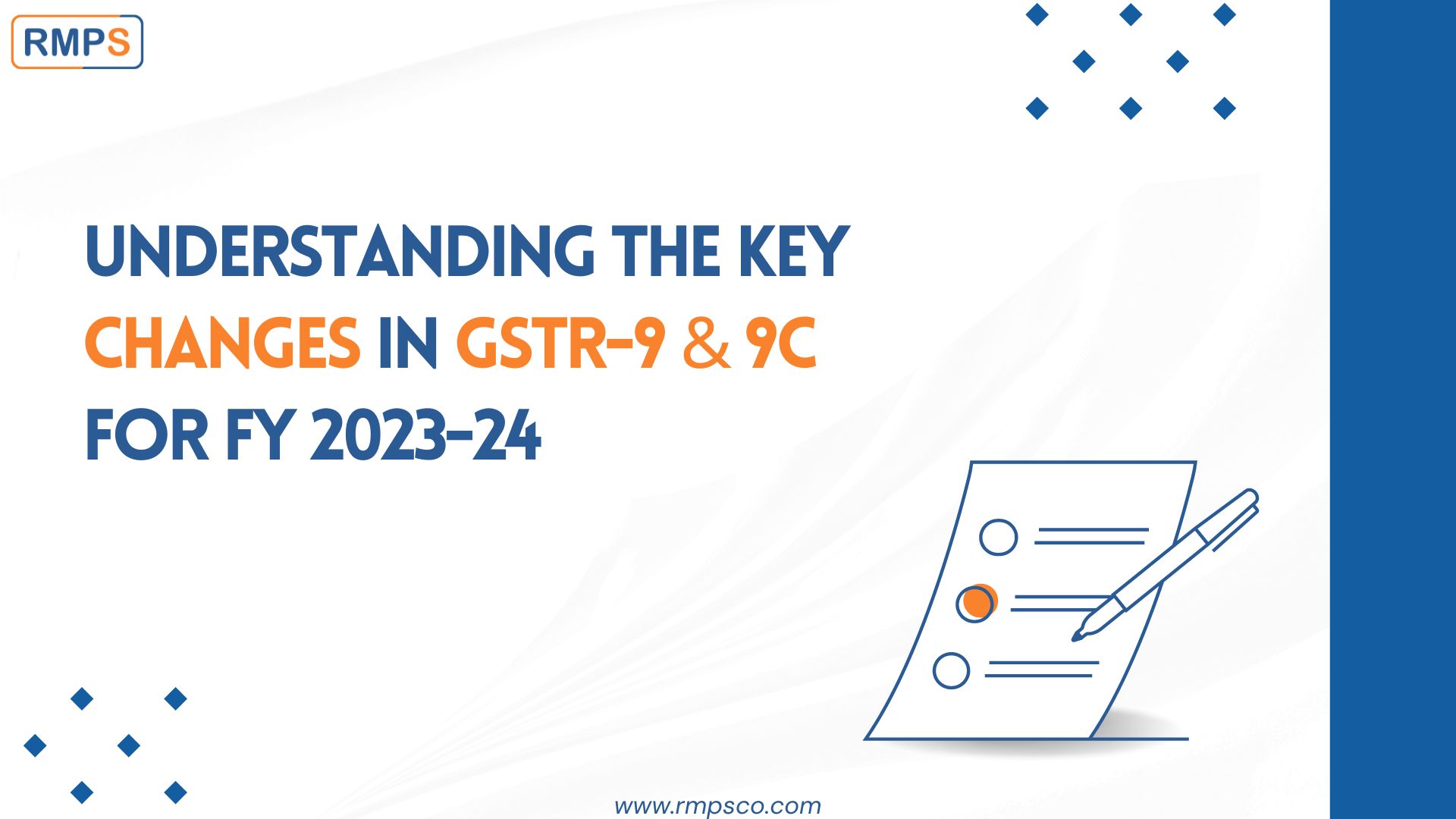
Staying informed about GST updates is essential for businesses. Recently, the government introduced important updates to Form GSTR-9 and GSTR-9C for the Financial Year 2023-24 through Notification No. 12/2024 – C.T. dated 10.07.2024. These changes aim to simplify the reporting process and enhance accuracy.
1. New Entries in GSTR-9
The GSTR-9 form now includes new entries that improve the reporting process for e-commerce operators and suppliers.
- 4G1: E-commerce operators now need to report supplies where they pay tax under Section 9(5). This update ensures that e-commerce operators clearly report their tax liabilities.
- 5C1: Suppliers using e-commerce platforms must report the tax they owe under Section 9(5). This change clearly separates the tax responsibilities of suppliers from those of e-commerce operators.
2. Changes in GSTR-9 Reporting
Several tables in GSTR-9 have been updated to better meet the needs of businesses and tax authorities:
- 5D, 5E, 5F: Businesses must now report the value of exempted, nil-rated, and non-GST supplies separately. Additionally, they can choose to report exempted and nil-rated supplies together, which simplifies the process.
- 5H, 5I, 5J, 5K: Businesses can now adjust credit notes, debit notes, and changes in supplies directly within the same table. This update makes it easier to correct any mistakes after the initial filing.
- 6B & 6C: Reporting of Input Tax Credit (ITC) is now more detailed. Businesses must report ITC on capital goods separately. For ITC under the Reverse Charge Mechanism (RCM), businesses can report figures in a consolidated manner in Table 6D, reducing complexity.
3. Optional Reporting in GSTR-9
To reduce the reporting burden, several tables in GSTR-9 are now optional:
- Tables 12 & 13: Reporting ITC availed and reversed in the next financial year is now optional. This change gives businesses flexibility in reporting these figures.
- Table 15: Reporting details related to refunds and demands is also optional, simplifying the form for businesses with minimal entries in this category.
4. Mandatory Reporting in GSTR-9
Certain aspects of GSTR-9 remain mandatory:
- Tables 17 & 18: Businesses with an annual turnover above Rs. 5 Cr must report HSN details of outward and inward supplies at a 6-digit level. For businesses with a turnover up to Rs. 5 Cr, reporting at the 4-digit level for B2B supplies is now mandatory. This ensures detailed reporting for accurate tax assessments.
5. Key Changes in GSTR-9C for FY 2023-24
GSTR-9C has also been updated to make the matching process more straightforward:
- Tables 5B to 5N: Businesses can now match their total turnover as per books with Form GSTR-9 by reporting figures directly in Table 5O. This simplifies the reconciliation process.
- Table 14: Reporting expense-wise ITC availed as per books is now optional, which reduces the reporting burden on businesses with fewer ITC figures to report.
Conclusion
These changes in GSTR-9 and GSTR-9C for FY 2023-24 reflect the government’s efforts to simplify GST compliance. Therefore, businesses, especially those using e-commerce platforms, should pay close attention to these updates to stay compliant and avoid issues.
LinkedIn Link : RMPS Profile
This article is only a knowledge-sharing initiative and is based on the Relevant Provisions as applicable and as per the information existing at the time of the preparation. In no event, RMPS & Co. or the Author or any other persons be liable for any direct and indirect result from this Article or any inadvertent omission of the provisions, update, etc if any.
Published on: August 21, 2024
